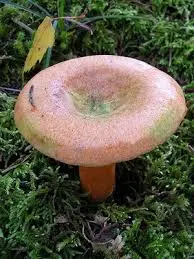Contents
Mushrooms are real gifts of nature, not only tasty, but also incredibly healthy. And chanterelles and mushrooms, moreover, are considered a real delicacy. In terms of nutritional value, both species are mushrooms of the highest category. Many mushroom pickers want to find them in the forest, but, unfortunately, not everyone knows how they look and how they differ.
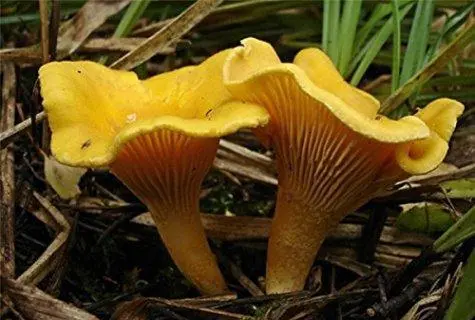

Redheads and chanterelles – are they the same thing or not
Chanterelles and mushrooms are completely different mushrooms, the difference between them is clearly visible in the photographs. Their only color is similar – orange in both species. The former have a lighter shade, while the latter are somewhat darker, closer to brown. In addition, the shape of the hat they have is different.
- Chanterelle:

- Ginger:

The halo of chanterelle growth is birch or mixed stands. They grow in groups, choosing places with wet moss, grass and fallen leaves. Often their families can be found on hillocks. The taste of mushrooms is not too pronounced, slightly rubbery (at an old age), but they are very fragrant. They are edible in any form. Basically they are salted, pickled, dried and fried. A valuable quality is their excellent transportability.
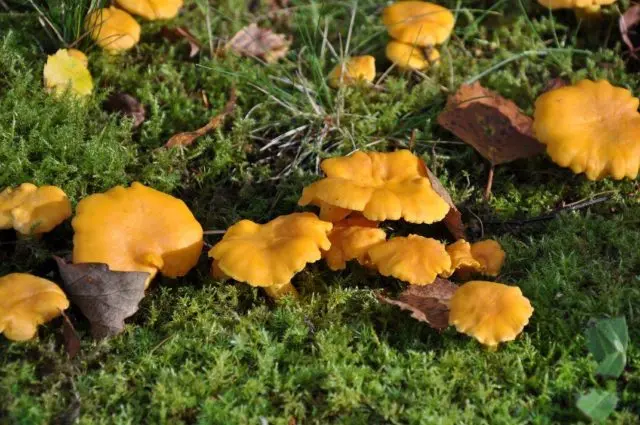
Ryzhik grows mainly in pine and spruce forests, often on small hills, glades and edges.
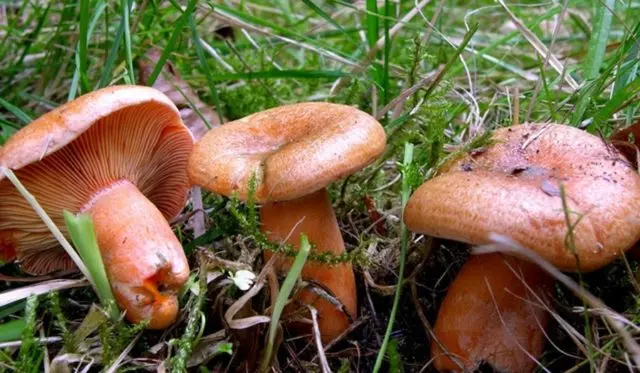
Their taste is fully revealed in pickles and when frying. They are also eaten raw, dipped in salt beforehand. Mushrooms do not need to be soaked.
What do chanterelle and saffron mushrooms look like
Ginger is an edible mushroom from the genus Milky (lat. Laktarius). Strong, stocky, reddish-red color. The hat is round, 3-20 cm in diameter, convex (hemispherical) at a young age. As it grows, its edges become thinner and wrap towards the bottom. A kind of funnel forms in the center. The plates are yellow, narrow, forked, often located. The stem is hollow, about 10 cm long, 1-2,5 cm in diameter. The body of the mushroom is rather fragile and often breaks at the edges, especially the cap during transportation.

Coloring is the most diverse. The cap of mushrooms is dark orange, olive-gray, yellow-buff. The brightest specimens grow in the grass, hiding under the crowns of trees. On the cap of the mushroom are brown-red or dark green circular zones (kind of rings).
Chanterelle ordinary (real) or Cockerel is an edible delicacy mushroom of the chanterelle family. The color varies from bright yellow to yellow-orange. The hat and stem have the same color, but the stem is sometimes a little lighter. The fruiting body is cap-shaped. The stem and cap merge into a single whole, there is no pronounced border. The cap of the mushroom is small, 2-12 cm in diameter, irregularly shaped, concave in the center. The edges are wavy, embossed, wrapped towards the middle. The surface of the fruiting body is smooth, matte.
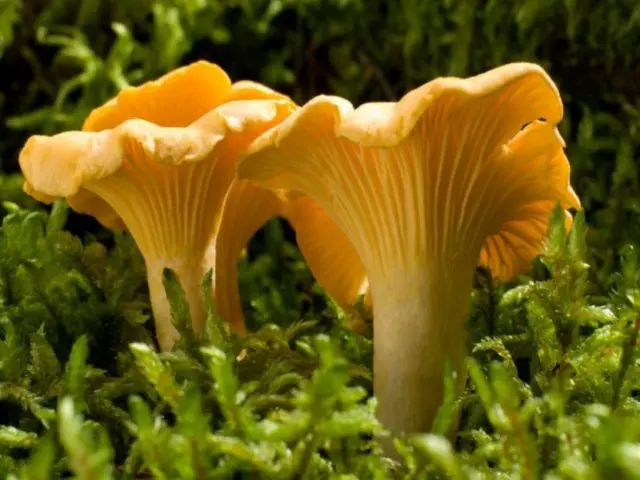
The pulp of the chanterelle is dense, fleshy, the leg is fibrous. The taste of the mushroom is slightly sour, the aroma is fruity, woody. The length of the leg is 4-7 cm, the diameter is 1-3 cm, it usually tapers slightly towards the bottom.
What is the difference between chanterelles and redheads
There are more differences between chanterelles and saffrons than similarities. First, they are completely different in appearance. The hat of an adult fox is funnel-shaped. The depression in the center is quite strong, and the edges are very wavy. The cap of the camelina is less concave, with more even edges.
The stem and plates of the camelina cap are clearly demarcated, while in the chanterelle they are smoothly connected. There is no sharp delimitation at the crossing point. On the cap of the chanterelle there are no greenish rings and spots characteristic of the camelina.
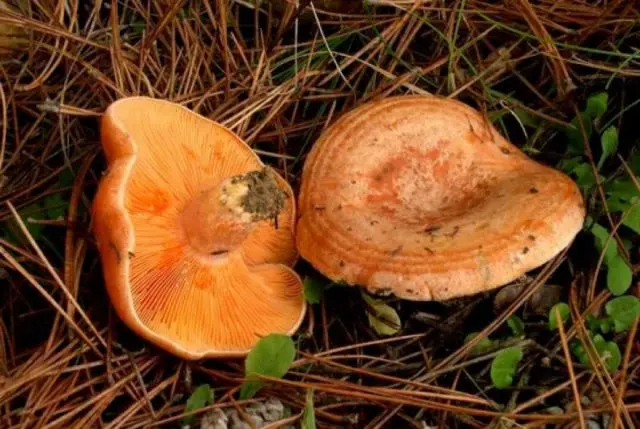
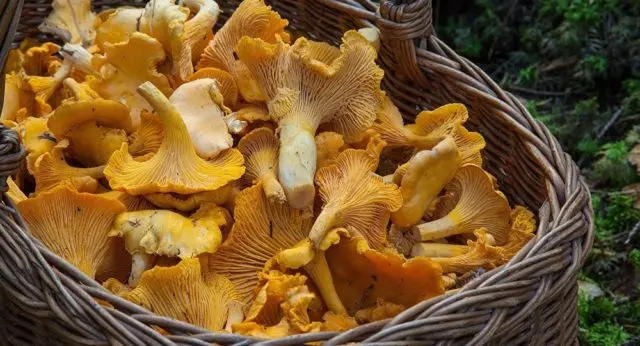
How to distinguish mushrooms from chanterelles
You can distinguish between mushrooms and chanterelles by breaking off a piece of pulp. In the camelina, it is brittle, and milky juice (carrot-orange drops) appears at the site of the break. It is sweetish, with a slight spiciness and a slight resinous aroma. In the air, the milky juice very quickly acquires a green tint. The body of the fungus also turns green at the touch points.
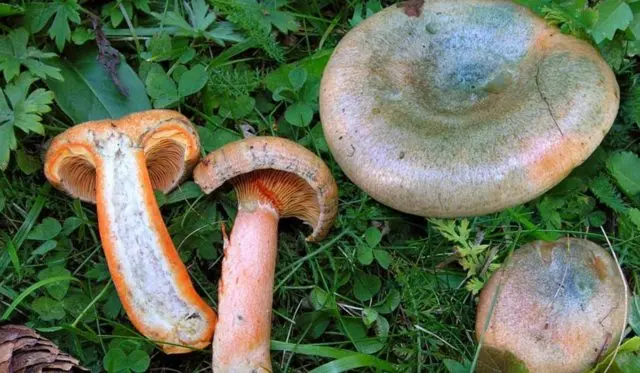
In chanterelle, the flesh is fleshy, soft, yellowish-white, does not change in places of pressure or cut. Also, milky juice does not stand out when cut. When pressed, the flesh turns a little red. The leg is solid, without a cavity inside, while in the camelina it is hollow – (empty inside).
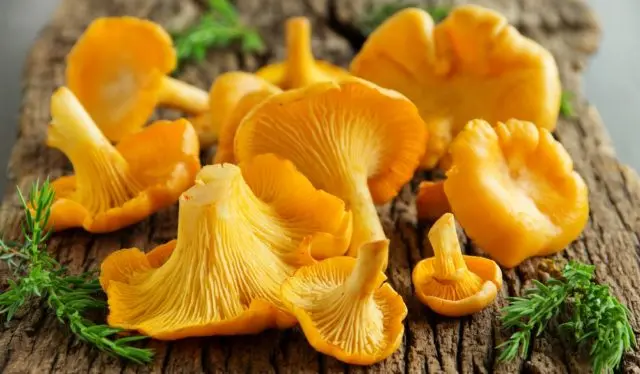
Table of characteristic differences:
Evidence | chanterelle | Ryzhik |
Color | Light orange (closer to yellow) | Dark orange, with patches of green and circles around the edge of the cap |
head | With a pronounced funnel | Small indentation in the center |
Cap edges | Wavy | Smooth |
Leg and plate | Seamlessly connected, almost being one whole | clearly demarcated |
Skin of the fruiting body | Velvety | Smooth, slightly sticky |
Pulp | fleshy | Fragile |
milky juice | No | Appears on the cut |
Wormholes | Doesn’t get wormy | Affected by worms |
Leg | No cavity inside | Hollow |
Conclusion
Chanterelles and mushrooms are very tasty and healthy representatives of the mushroom world, which mushroom pickers want to see in their basket. But before you go on a “mushroom hunt”, you need to learn how to distinguish between them. Despite the external similarity, they belong to different families of fungi. Going to the forest, you should take into account the information presented in this article, then picking mushrooms will be truly interesting and exciting.











